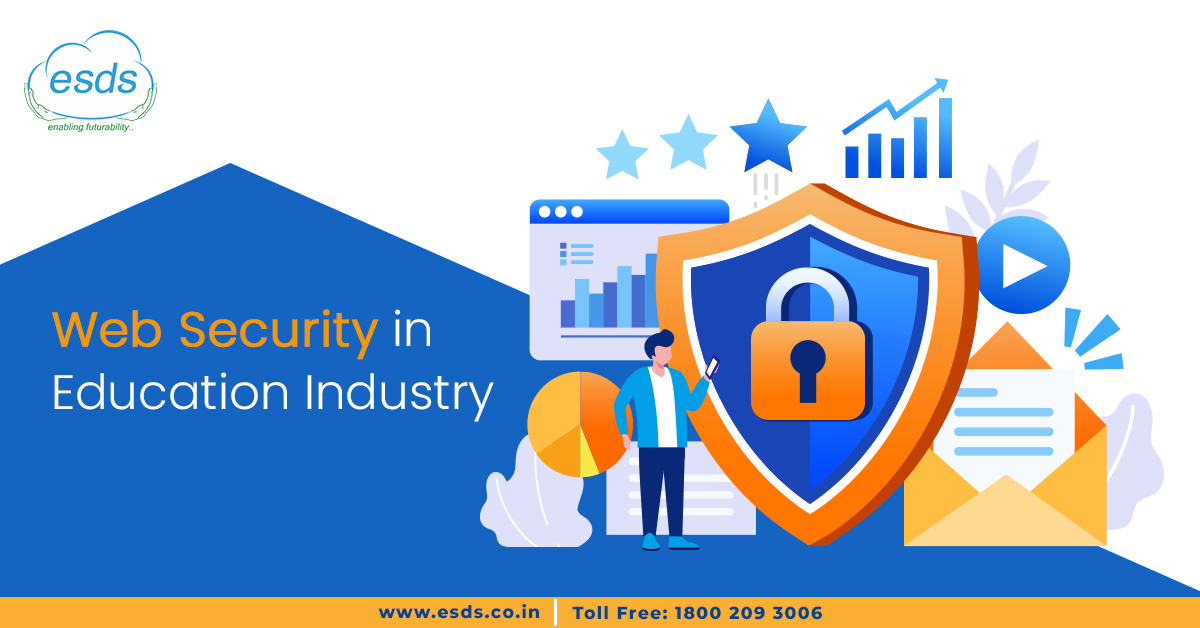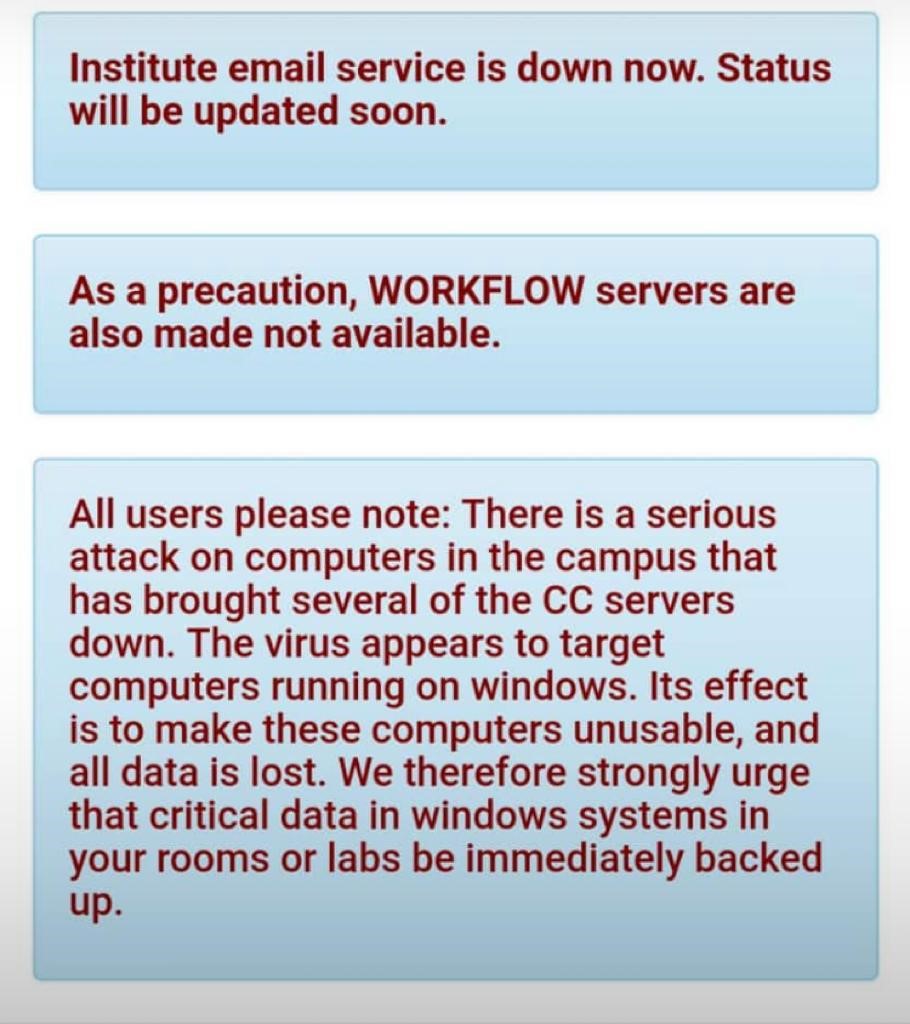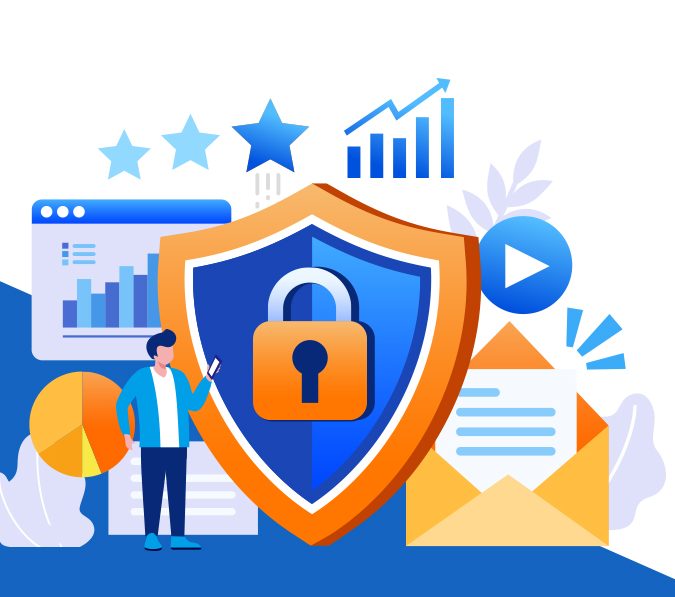Why Web Security is Important in the Education Industry

Today, no industry has been completely immune to any kind of cyberattacks. The sad part is that the cybercriminals have not even spared the education sector and have managed to infiltrate into their networks using malicious practices. In any educational institute, the number of students and management is growing every year, resulting in more number of connected devices. This huge number of connected devices has indirectly exposed the education sector to vulnerable cyber threats. Like any other industry, the education industry also has crucial data assets that have to be properly secured.
Case Discussed: IIT-Madras Malware Attack (February 2020)
Barely, just a week back, one of the top-education institutes of the country, IIT-Madras has been the recent victim of a cyber attack. All their email servers seem to have been hacked and the complete mail system was shutdown. Despite the mail server getting completely hacked, the management has deployed a backup system for the entire mail system and looks like the system will be restored soon. A cyber analyst commented that this could possibly have been a ransomware attack.
It’s good to know that the administration has created backups for the email system, but the question arises what post-effects this cyber attack will have? The institute has got tie-ups and exchange programs with various universities across the globe. This cyberattack might create a denting image of the institute in the global education domain.

The premium institutes like IITs store huge volumes of data related to advanced research, projects, etc. They even store critical student information, faculty and alumnus data.
How the Educational Institutes Are Targeted?
After going through the above-discussed case of IIT-Madras, questions arise that how the foreign ‘intruders’ enter the network of any educational institutes.
So, the following are major ways in which cyber attackers penetrate the networks.
- Phishing Scams
In a phishing scam, an email is designed in a way to fool the user to fall into the bait of virtually-trusted websites for gaining access to their credentials, be it- student-critical data or any confidential research carried out by the students and faculties. Hackers usually deploy this method to target this sector.
- Ransomware and Malware
As we have seen in the case of IIT-Madras, the Windows users were denied from accessing their network and files leading to mass disruptions. The advanced form of this threat is when the attackers hold user files for ransom. Ransomware and malware are injected into systems of the educational institutes by either a file or an attachment that might look legitimate.
Which Data is at Risk?
Based on the recent cybersecurity attack trends, it has been observed that the education sector continues to be the top target for cyber attackers. This is because of the fact that most of the educational institutes do not take the security challenges seriously and miserably fail to understand the impact of a cyberattack. The educational institutes have large volumes of personal data of students, admin staff.
So, let us understand what types of data are at risk in the education industry.
All the educational institutes keep a lot of financial information about their student and staff. The staff (faculties, non-teaching staff) maintain their bank accounts for receiving their monthly salaries from the educational body. Students usually have their bank accounts tied up with the educational institute primarily for paying their fees and carrying other expenses. This is a huge volume of crucial data whose security cannot be compromised.
Educational institutes also have information about their various stakeholders like students, teaching staff and other crucial information needed to run the educational bodies. The security of this information is also crucial. In case this information gets lost or is breached by the foreign attackers, it can disrupt the functioning of the institute resulting in a huge operational loss.
Another type of data that is at risk in this industry is the educational data. This data comprises of the research was done by the students and faculties, lecture schedules as well as the grading system for performing evaluations and assessments. All these forms of data are crucial for educational institutes. Their availability and integrity at all times are important for the internal operations of institutes.
Challenges Faced by the Industry
Every educational institute has several departments and many users have access to these from remote locations. A huge volume of data flows in and out of the network system and this, in turn, has increased the challenges that are faced by the industry. Some top-challenges that this industry faces include.
- Lack of Centralized IT Systems
Most of the departments in the educational institutes have their intra-departmental IT systems, leading to no centralized IT infrastructures. All these departments have several systems connected to these local networks based on their individual requirements. With no centralized IT system in place, it becomes difficult to uniformly implement security policies across the organization.
- Rise of BYOD* Culture
(*Bring Your Own Device)
Most of the educational institutes allow the students to bring in their own devices for storing data. To carry out their projects simultaneously, students bring their USB drives and connect to the systems that are available to them. In most cases, it has been seen that students do not have anti-malware software installed in their systems. This leads to students going for a pirated version of the required software. This free software enters the institute’s network once the student’s infected device gets connected to a system on the network.
- Internal Threats
In any industry, internal threats are one of the main reasons for data breach and loss. An insider attack can take place by the means of a phishing email or even transferring crucial information across personal and insecure devices on the network. Sometimes, the login credentials of an employee/student can be compromised by an insider resulting in loss of sensitive information.
Overcoming Challenges
Once the above-stated threats and their channels have been identified, the following are some counter-measures that the industry can deploy to safeguard their crucial information.
- Identifying the top assets and securing them with a security solution
- Creating a detailed analysis of potential risks and vulnerabilities to strengthen the current security posture
- Implementing a strong access control system based on the student’s authentication role to stop any unauthorized access on the network
- Creating strict cybersecurity policies and enhancing the awareness levels inside the educational institute
Concluding Notes
Like any other industry, the education industry has also been under the cybersecurity scanner for years now. Major reasons for cyberattacks and counter-security policies have been discussed in the above article. What’s important for this industry is that they provide a centralized system across their infrastructure and provide authentication-based role access to the actors (users) present in the network.
- Considering Data Centers in India to Overcome Economic Conditions - May 10, 2022
- Determining Why Your Organization Needs Web Application Security - February 11, 2022
- How Does a Business Benefit with Managed Services - January 21, 2022
